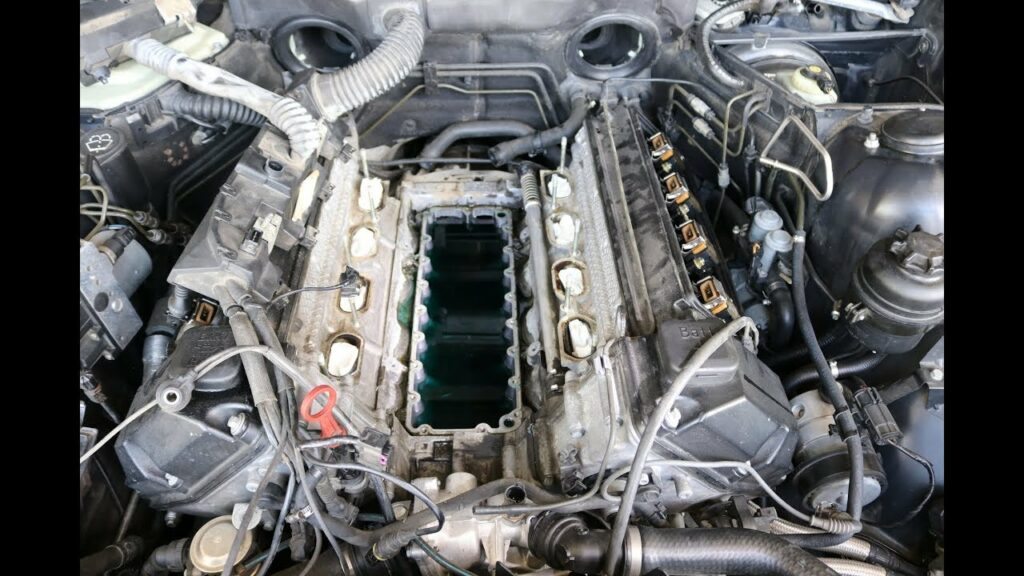As an avid car enthusiast, I’ve encountered a fair share of automotive challenges, including the notorious rear main seal leak. It’s a pesky issue that can manifest in various ways, leaving oil stains on your driveway and depleting your engine’s vital fluids. After tackling many such leaks over the years, I decided to share my experience and the most effective methods I’ve discovered to help fellow DIYers fix this common automotive headache.

Image: lahatrend.weebly.com
Let’s dive into the world of rear main seal leaks, delve into their causes, and provide a comprehensive guide to resolving them effectively.
Understanding the Rear Main Seal
The rear main seal, a crucial component within the engine’s architecture, plays a vital role in preventing oil from seeping out from the rear of the engine, where the crankshaft meets the engine block. Over time, this seal can succumb to wear, heat, and the corrosive nature of oil, making it vulnerable to deterioration and ultimately causing leaks.
Causes of Rear Main Seal Leaks
The culprit behind rear main seal leaks can be attributed to several factors, including:
- Aging and wear: As vehicles accumulate miles, the rear main seal inevitably degrades, increasing its susceptibility to leaks.
- Excessive engine vibrations: Intense vibrations stemming from unbalanced engines or faulty components can aggravate the seal’s health.
- Oil pressure issues: Unusually high oil pressure can exacerbate seal wear, hastening its demise and leading to leaks.
li>Faulty installation: Improper installation during a previous repair can compromise the integrity of the seal, diminishing its sealing capability.
Step-by-Step Guide to Fixing a Rear Main Seal Leak
If you’re ready to tackle this challenge, follow these steps for a comprehensive DIY repair:
- Gather tools and materials: Assemble an arsenal of essential tools, including a socket set, wrenches, a seal puller, and the new rear main seal.
- Prepare your workspace: Choose a well-ventilated area with ample space to maneuver safely.
- Drain the oil: Locate and unscrew the oil drain plug to allow the oil to drain into a suitable container.
- Remove transmission: Carefully detach the transmission from the engine, taking necessary safety precautions to prevent injury.
- Extract old seal: Employ the seal puller to remove the old, leaking rear main seal, ensuring thorough cleaning of the surrounding area.
- Install new seal: Position the new seal into its designated groove, ensuring it sits firmly and squarely.
- Reassemble components: Reinstall the transmission, carefully aligning it with the engine. Tighten all bolts to manufacturer specifications.
- Refill oil: Pour in the recommended quantity of fresh oil into the engine and replace the drain plug.

Image: www.usedcars.co.ke
Expert Tips and Advice for Success
Armed with these insights, you’re well-equipped to tackle this repair with confidence. Here are some valuable tips and advice from experienced mechanics:
- Precision is paramount: Pay meticulous attention to detail at every stage of the process to prevent complications. Double-check the alignment of components and the tightness of bolts.
- Cleanliness is crucial: Ensure the work area, as well as the removed parts, are spotless before reassembly to avoid introducing contaminants.
- Consider flywheel inspection: While you’re in the vicinity of the rear main seal, take the opportunity to inspect the flywheel for any signs of wear or damage.
- Seek professional assistance: If you encounter any unforeseen challenges or lack the necessary confidence, don’t hesitate to seek guidance from a qualified mechanic.
FAQs on Rear Main Seal Leaks: Answered
To address lingering questions, here are some commonly asked questions and their corresponding answers:
A: While it’s tempting to overlook a minor leak, it’s strongly discouraged. Ignoring a rear main seal leak can lead to catastrophic engine damage if left unattended.
Q: How often should I replace the rear main seal?
A: Rear main seals don’t typically require periodic replacement. However, during significant engine overhauls or repairs that necessitate removing the seal, it’s considered wise to replace it proactively with a new one to ensure longevity and prevent future leaks.
Q: Is it expensive to fix a rear main seal leak?
A: The cost of repairing a rear main seal leak can vary depending on the vehicle make, model, and labor rates in your area. Expect to pay anywhere between $500 to $1500 for parts and mechanics’ fees.
How To Fix Rear Main Seal Leak
Conclusion
Fixing a rear main seal leak is a challenging yet manageable task for enthusiastic DIYers who possess a thirst for automotive knowledge. By following the comprehensive guide outlined in this article, you can equip yourself with the necessary tools and techniques to tackle this repair effectively, saving on costly mechanic fees and gaining valuable hands-on experience.
Embark on this automotive adventure with confidence, and remember that thorough preparation, precision, and attention to detail are the keys to success. If you encounter any difficulties or feel uncertain, don’t hesitate to seek professional guidance from an experienced mechanic. Your engine will thank you for the care and attention you invest in addressing this common issue, ensuring its optimal performance and longevity for many miles to come.